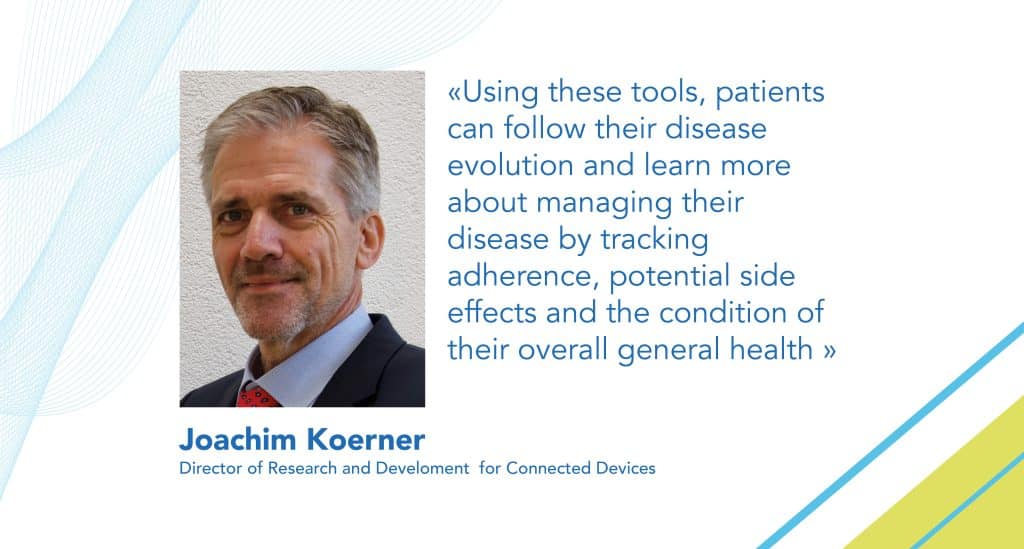
For our new “Meet Aptar Digital Health Team” interview series, we sat down with Joachim Koerner, Director of Research and Development for Connected Devices, to learn more about how hardware and software engineers work together to build connected drug delivery devices.
Patients are the first touchpoint for our connected drug delivery devices. Our mission is to improve patients’ control of their disease with a management tool that provides reminders, education, training and supportive elements. Using these tools, patients can follow their disease evolution and learn more about managing their disease by tracking adherence, potential side effects and the condition of their overall general health. Of course, without the patient, a connected drug delivery device is of little value. Therefore, understanding their journey and training patients is key to ensuring effective and long-term adherence of the devices.
By setting up real-world studies and collecting user feedback, we have identified several barriers which can impact the adoption of our solution:

Our organization develops multiple products, depending on the medical case. It can be a digital therapeutic only, a drug delivery device only, or a combination of the two.
We approach projects based on which solution will provide the most value to the patient. Most of the time, the patient’s primary benefit is from the physical device because it directly helps him to take his medicine. The digital therapeutic is more for long-term disease management, as it helps to monitor key data such as vital signs, as well as the overall evolution of the disease over time. Combined, digital therapeutics and drug delivery devices can be very powerful, which we’ll discuss below.
Aptar Digital Health organization is split into two teams, with one focused on the device and another on building the software. Communication between both is key to ensure we evolve at the same time, search for a common solution when facing an issue, or work hand in hand to address a challenge.
We recommend focusing on two features that help maximize patient engagement and long-term usage.
The first one is to provide direct feedback to the patient, both on the app and on the device. Visual feedback (a light that turns on) or acoustic feedback (a sound) can guide a patient through using a device. It’s important to make patients aware they are doing things correctly or need to stop using a device. Being able to provide feedback without the app is important; patients don’t always have their smartphone with them in the real world, or holding it can be difficult when using a therapeutic device at the same time. Plus, the device will always be there – patients can’t take their treatment without it.
The second one is to consider all the attachments and pairing elements that complexify the use of the device. You must think about intuitive systems. For example, once a treatment is finished, patients must replace the device. Sometimes, this must be done after each use. Think about all the necessary steps: Remove the finished treatment, put it in the trash, clean your hands, clean the device, look for the new treatment, insert it in the device, and check that it’s done properly. All this asks for time and concentration on behalf of the patient. If it’s too complicated to replace the treatment, or if the patient isn’t sure they’ve done it correctly, they will stop using it.
Intuitive attachment and pairing processes will ensure success and engagement. Therefore, simplifying this process as much as possible is key. That way, patients don’t feel like taking their therapy is a burden – instead, it’s a simple and automatic.